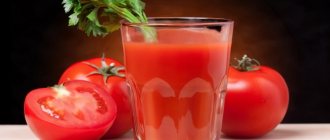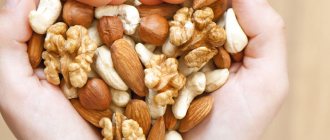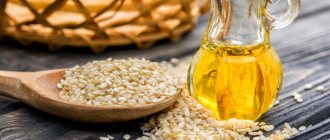Women expecting a baby take special care to ensure that their food is as healthy as possible. However, some products can also be harmful. To prevent this from happening, it is better to work through your diet and learn more about food. In this article, we will figure out whether pregnant women can eat turnips and what consequences their consumption can lead to.
- What is useful for expectant mothers
- Contraindications and harm
- How to choose when purchasing
- How and where to store at home
- In what form is it better to eat, what can be done and what is combined with
Turnips during pregnancy: tasty, satisfying, healthy!
From time immemorial, turnips have been the main component of most Russian dishes.
It was served on the table both in the huts of peasants and in the houses of the wealthy class. Turnips were used to make soups, stew, steam, and prepare sweet dishes. But, with the spread of potatoes brought to Russia in the 18th century, turnips were forgotten for a very long time. It was even considered a product for the poor.
Now, due to the desire of Russians for proper and healthy nutrition, the popularity of turnips is being revived again.
General information about turnips
Turnip is a herbaceous plant of the cabbage family, unpretentious to growing conditions, easy to prepare and stored for a long time without losing its beneficial properties if the correct storage conditions are observed.
It is nourishing and tasty , easily absorbed by the body, and is also rich in vitamins, micro- and macroelements.
Basically, the turnip root is used for food, but you can make a salad from its leaves.
It contains glucoraphanin, which is very rarely found in plant foods, a trace element that helps the body fight cancer cells and tumor formation .
Besides turnips, it is found only in broccoli, kohlrabi and cauliflower.
The healing properties of turnips are also known. Its decoctions and juices help cure coughs and sore throats , relieve asthma attacks, help with bronchitis, and have wound healing, analgesic and diuretic effects.
Turnip - “Live Healthy!” program
People often ask: can pregnant women take a bath or not? Advice and recommendations from doctors are in this article.
Read about how and where childbirth begins in our article.
Turnip during pregnancy
Benefits and indications
Considering the beneficial properties of turnips, it is highly recommended for expectant mothers to have it in their diet.
Turnips provide the diet with B vitamins , which everyone needs, but must be included in the diet of pregnant women. This is B1 , which has a beneficial effect on the cardiovascular system and prevents toxicosis.
Vitamin B2 , also contained in turnips, regulates proper metabolism and fetal growth in the womb, and prevents the formation of cracks in the nipples.
It is vitamin C that forms strong immunity , which helps fight infections and colds. In addition, it participates in the formation of collagen and elastin, which are the basis of bones and cartilage, and ensures the strength of blood vessels and capillaries.
A sufficient amount of vitamin C during pregnancy prevents the formation of stretch marks on the skin , fragility of blood vessels, hemorrhages and varicose veins.
This vitamin promotes better absorption of iron , which is often deficient in the body of a pregnant woman, causing anemia.
In addition, it is involved in the formation of vitamin D , necessary for the expectant mother and her baby, the proper development of which completely depends on the mother’s nutrition.
It is interesting that turnips contain tiny amounts of arsenic and rubidium salts . It is known that poison in a small dose is often a medicine.
The salts of these toxic substances destroy pathogenic mycobacterium tuberculosis , and also help resist infection with leprosy.
One of the indications for the use of turnips is the stress of expectant mothers , arising from fear of the upcoming birth and further difficulties associated with the birth of a child. Turnip decoction, which has a sedative property, will help them with this .
In order
to get rid of insomnia and anxiety , two hours before bedtime it is recommended to drink 100 grams of turnip broth, adding a spoonful of honey to it.
Turnips are very filling, but low in calories, so eating them can help the expectant mother avoid gaining excess weight.
In terms of the feeling of fullness, it can be equated to potatoes, but turnips have an advantage . Potatoes satiate the stomach due to the high content of starch, which takes a long time to digest, and the carbohydrates contained in potatoes contribute to the deposition of fats in the body.
When eating turnip dishes, a feeling of prolonged satiety is facilitated by the slow digestion of healthy fiber , which promotes active intestinal function, prevents stagnation of nutrients, which also has a beneficial effect on cholesterol levels in the body. This is also important for the mother and her child.
It is boiled into a pulp, compresses with which are applied to diseased joints.
Medicinal turnip - Good Morning program
You can learn about the benefits of vitamin E during pregnancy from this article.
If your plug comes out: when is your due date? Details are here.
Harm and contraindications
there are also contraindications for consuming this root vegetable , which expectant mothers need to take into account so as not to harm themselves and the child.
These are diseases of the gastrointestinal tract, liver and kidneys, as well as problems with the thyroid gland and central nervous system.
Pregnant women are not recommended to drink turnip tea right before bed , as it has a diuretic effect.
Methods of use
Turnips are remarkable not only for their beneficial and medicinal properties; they can be used to prepare many different culinary masterpieces that can surprise and delight even gourmets.
It is better to use turnips in food in their raw form , then its beneficial properties will be preserved as much as possible. Raw turnips may have a bitter taste, but this can be easily removed by lightly pouring boiling water over the root vegetable.
There are many delicious and healthy salads with turnips .
These are not only that are easy to prepare and contain a minimum of ingredients: turnips with onions and sour cream, turnips with carrots, cabbage, radishes, beets, spinach and other vegetables and herbs.
But also original and piquant with oranges, raisins, honey, sprats, cheese, crabs and many other products that would seem unexpected in combination with turnips.
It is better to season turnip salads with natural products - vegetable oil, sour cream, honey.
Hot dishes with turnips are traditional - they are added to cabbage soup and borscht, side dishes and main courses, casseroles and cutlets are prepared from it, stuffed, and used as a filling for pies.
It goes well with meat, fish, and almost any ingredient. In hot dishes, turnips can act either as the main ingredient or as one of the components of a side dish or soup.
Turnip, forgotten in recent years, has become almost an exotic vegetable on counters and tables, although by right it should be present in the human diet, except in cases of contraindications.
It was not for nothing that our ancestors called this wonderful root vegetable the “golden turnip ,” putting into these words not only the similarity in color, but most importantly, its irreplaceable properties in proper nutrition, prevention and even treatment of diseases.
Turnip - program “About the Most Important Thing”
What medications are there to stimulate ovulation? Find out more now!
This article will tell you about days favorable for conceiving a child.
How to choose when purchasing
To choose a fresh and tasty fruit, you need to pay attention to a number of basic factors.
- Size - the vegetable should be small, approximately, it should fit in the palm of your hand. Small turnip fruits will be tasty, while large ones can be noticeably bitter.
- Color - naturally, there are different varieties of turnips. Mostly you may see yellow or white fruits. Yellow turnips will have an expressive taste, but the texture will be hard and rough. White turnip is more tender and, due to its structure, is better absorbed in the body. Just white turnip fruits are best suited for pregnant women, as well as for children.
- Weight – A ripe, tasty turnip will definitely be heavier than it looks.
- Condition of the skin - it should be smooth, without damage or suspicious spots.
Turnip during pregnancy
Turnips have long been one of the main components of Russian cuisine. It was served both in peasant huts and on the estates of wealthy nobles. Turnips were used to make soups and other dishes.
Composition of the product
Turnip is a herbaceous plant belonging to the cabbage family. It is easy to prepare. If proper storage conditions are observed, turnips do not lose their beneficial properties for a long time. The tasty product is easily absorbed by the human body; it contains many vitamins and beneficial microelements.
The plant is rich in the following substances:
Turnips contain a substance that is quite rare in products of plant origin - glucoraphanin. It reduces the likelihood of tumor formation. Glucoraphanin is found not only in turnips, but also in cauliflower and broccoli.
The root vegetable itself is mainly eaten. However, turnip leaves can be used to make a delicious salad.
The benefits of turnips during pregnancy
Turnips contain vitamin B1, which has a beneficial effect on heart function. This substance reduces the risk of toxicosis during pregnancy. Vitamin B 2 contained in the plant normalizes metabolism and prevents the appearance of cracks in the nipples.
Turnips contain quite a lot of vitamin C, which strengthens the immune system. Ascorbic acid increases the body's resistance to adverse environmental factors. It takes an active part in the formation of collagen and elastin and increases the strength of capillaries. Vitamin C prevents the development of stretch marks and varicose veins in a pregnant woman. Ascorbic acid helps iron be absorbed faster in the body, preventing the occurrence of iron deficiency anemia.
Dishes prepared from turnips normalize intestinal function and help eliminate lethargy and irritability.
Application of the product in the treatment of various diseases
Turnip helps get rid of the anxiety that often arises before childbirth. A decoction of the plant is endowed with pronounced sedative properties. It helps cope with insomnia.
For colds, an infusion of turnip leaves is also prepared. They contain large amounts of vitamin C, iron, and minerals. The juice obtained from turnip leaves contains a lot of calcium. They contain potassium, which has a beneficial effect on the heart.
Turnip juice helps eliminate sore throats and relieves asthma attacks. The product is excellent for bronchitis. Moreover, turnip juice has wound-healing, diuretic and analgesic properties.
Turnips for preparing a variety of dishes
The product is used in preparing the taste of dishes that will please even a gourmet. Turnips are best eaten raw. In this case, its medicinal properties will be fully preserved. Fresh turnips have a bitter taste. In order to get rid of it, you need to pour boiling water over the root crop.
On the World Wide Web you can find many recipes for making delicious salads with turnips. It is mixed with carrots, beets, cabbage, onions, radishes and herbs. There are also more original recipes for spicy salads. When preparing them, turnips are combined with crabs, cheese, raisins, oranges, honey and other ingredients. Salads are usually seasoned with sour cream or vegetable oil.
Turnips are added to borscht and cabbage soup. It is actively used in the preparation of cutlets, casseroles and pies. Turnips go well with dishes made from meat or fish.
A pregnant woman who cares about her figure should prepare the following salad :
- First you need to wash the turnips thoroughly. The root vegetable is peeled and grated on a coarse grater.
- Add one finely chopped onion to the turnip.
- Add salt and a small amount of coriander to the salad.
The dish must be seasoned with vegetable oil. It is recommended to serve it immediately after preparing it. This will allow you to fully preserve all the medicinal properties of turnips.
There is also such a simple recipe:
- One medium-sized turnip is peeled and placed in a baking dish.
- Add 100 ml of water to it.
- The turnips are baked in the oven until they become soft.
After this, the root vegetable is cooled and cut into neat slices. Finely chopped onion is added to the turnips. Then the dish is salted, seasoned with a small amount of vegetable oil, and sprinkled with herbs.
Contraindications to the use of turnips
Expectant mothers suffering from nervous diseases should be careful when using turnips. Eating the product should be avoided if a pregnant woman has pathologies of the digestive organs, pathologies of the liver and kidneys, or problems with the thyroid gland.
A decoction prepared from turnips should not be drunk before bedtime. This is due to the fact that the drink is endowed with pronounced diuretic properties.
Application of the product in the treatment of various diseases
Turnip helps get rid of the anxiety that often arises before childbirth. A decoction of the plant is endowed with pronounced sedative properties. It helps cope with insomnia.
For colds, an infusion of turnip leaves is also prepared. They contain large amounts of vitamin C, iron, and minerals. The juice obtained from turnip leaves contains a lot of calcium. They contain potassium, which has a beneficial effect on the heart.
Turnip juice helps eliminate sore throats and relieves asthma attacks. The product is excellent for bronchitis. Moreover, turnip juice has wound-healing, diuretic and analgesic properties.
The benefits of turnips during pregnancy
In Russian folklore there is a fairy tale about a turnip that was pulled and pulled, but could not be pulled out.
Few people are familiar with this vegetable, because it is as popular as cucumbers or tomatoes with cabbage. However, you should know about this vegetable, as it is extremely beneficial for the body, especially when the body is susceptible to any disease. So today we will introduce you a little to the properties for the whole body, and we will dwell in more detail on the beneficial, and perhaps harmful, properties of turnips for pregnant women. Pregnancy, without any doubt, is a stage that every woman goes through in her life. And the only thing that worries her during this period is the health of the unborn baby, namely: how not to harm the development of the fetus, what needs to be eaten during this period, and most importantly, what is healthy to eat and in what quantity. After all, young mothers treat everything with caution, and being nervous during this period is extremely contraindicated. So, in order to dispel the doubts of our mothers, we will devote an article to the benefits of turnips for pregnant women.
Let's start with the composition, which is probably known to few:
- Water.
- Alimentary fiber.
- Ash.
- Beta carotene.
- Lutein.
- Choline.
- Ascorbic acid.
- Folic acid.
- Betaine.
- Potassium.
- Calcium.
- Magnesium.
- Sodium.
- Phosphorus.
- Glucose.
- Fructose.
- Lysine.
- Tryptophan.
- Omega-3.
- Omega-6.
– As you can see, the composition is extremely rich and varied . Contains a large number of micro- and macroelements, essential and non-essential amino acids, vitamins and so on.
– Dietary fiber has a beneficial effect on the body, carefully and gently cleansing the intestines. They also saturate the body, as they contain fiber, while simultaneously cleansing the body of all harmful substances such as impurities, toxins, and poisons.
– Beta-carotene is a vitamin that preserves our youth and prolongs life. The risk of cardiovascular diseases is reduced, and since turnips also contain ascorbic acid, which everyone knows as vitamin C, the effect of beta-carotene is enhanced.
– Ascorbic acid , which is the most abundant vitamin in this vegetable, protects the body from infections and inflammatory processes, so for diseases such as colds, turnip is an indispensable assistant.
– Folic acid is an extremely valuable vitamin for women, since their reproductive system needs certain fats and acids. Folic acid helps during pregnancy, as well as during menstruation, reduces pain and relieves PMS symptoms.
– Potassium and calcium interact together. Calcium strengthens the enamel of our teeth, eliminates brittle bones, and is also involved in thickening hair and nails. Potassium is responsible for the proper distribution of fluid in the body, relieves swelling and enhances the effect of calcium.
– Tryptophan helps us sleep soundly and sweetly, also normalizes appetite and improves mood, which significantly reduces the chances of stress and depression.
– Omega-3 and omega-6 are also beneficial for the female body, because these are essential fats for the body, which reveal female beauty and help preserve it, strengthening hair and nails.
How and where to store at home
Of course, it is best to purchase in advance and store the vegetable yourself. You can store the fruits for about six months by deepening them in a box with sand.
You can store turnips in the refrigerator for no more than 1.5 months. It can be placed together with other vegetables, since turnips do not absorb foreign odors.
Do not cut off the tops at all - leave about 3 cm. This way the fruit will be preserved better. Before storing, there is no need to wash the fruits - this can significantly reduce the shelf life.
Mom and I
Everyone knows from childhood what kind of vegetable a turnip is! The health benefits and harms of this original Russian vegetable, unfortunately, did not interest people for a long time, who preferred another root vegetable to it - potatoes. However, recently you can increasingly find delicious and healthy turnip recipes. The website “I'm Healthy” decided to make its contribution to the popularization of this undoubtedly valuable and medicinal “resident” of garden beds.
In ancient times, for any person cultivating the land, it was an indescribable happiness to receive a rich turnip harvest for his work. And no wonder, because it was this root vegetable that was considered the basis of the diet of ordinary people (but rulers often consumed this product, as epics and chronicles tell us).
So, let's figure out why this turnip is so useful and what its medicinal properties are for the human body.
Medicinal and beneficial qualities of the product
Scientists say that the benefits of turnips for human health are limitless!
- Including the product in the daily diet significantly increases the body’s immune strength, and is also able to supply the organs with all the minerals and vitamins they need. It is not without reason that in the northern regions the vegetable was previously used as a medicine and prophylactic against scurvy.
- Recent studies have shown that turnips are healthier for the immune system than the “king of vitamin C,” oranges!
- It is believed that the chemical composition of turnips, the health benefits and harms of which simply must be taken into account when preparing dishes, contains substances that can prevent the development and occurrence of cancer cells.
- This root vegetable is often recommended to be included in the menu for people suffering from diabetes. At the same time, some doctors argue that turnip pulp should be taken with caution due to monosaccharides and disaccharides. Otherwise, you can get the opposite effect and only worsen your health.
- Turnip dishes can normalize the functioning of the stomach and intestines, and also facilitate their peristalsis and promote the production of gastric juice.
- In addition to the above, doctors advise eating this root vegetable not only for health, but also for beauty! Strong nail plates, strong thick hair and smooth, clean skin - this is what certainly awaits those who follow their advice!
- Turnips are low in calories and nutritious.
- It has antiseptic properties that improve the condition of gums and teeth, and also has a beneficial effect on wounds and cracks.
- Turnip decoction is an effective, simple way to treat coughs and sore throats.
- The juice of the tuber of this plant has a hypnotic and sedative effect.
- Turnip is also an excellent diuretic.
- When there is inflammation in the joints, warm compresses should be made from crushed turnips, which quickly relieve swelling and pain and significantly speed up the healing process.
We have described only a part of the long list of beneficial properties of turnip that it can help human health due to its unique chemical composition.
Do you want to know all the secrets of aromatic citrus? Read about the health benefits and harms of oranges here!
Chemical composition and nutritional value of the product
One hundred grams of turnip pulp contains:
- carbohydrates - 6.2;
- fats - 0.1;
- proteins - 1.5;
- 32 kcal;
- iron - 0.9;
- magnesium – 17;
- sodium – 17;
- phosphorus – 34;
- calcium – 49;
- potassium – 238;
- vitamin B2 – 0.04;
- vitamin B1 – 0.05;
- beta-carotene – 0.1;
- vitamin E – o.1;
- vitamin PP – 0.8;
- vitamin C – 20.
Using turnips for weight loss
Yes, yes, by regularly eating this root vegetable you can not only improve your body’s health, but also correct its figure. At the same time, as far as I know, there are no specially designed diets for turnips. However, there are a number of recommendations that will allow you to achieve stunning results:
- try to replace all potato dishes (especially side dishes) with turnips;
- try also replacing sweets with it;
- This vegetable should be included in the diet carefully and in small portions, as problems with the gastrointestinal tract are possible;
- It’s best if you alternate between cooked and raw turnips.
Healing food with turnips
Taking into account the wide range of healing properties of turnips, doctors recommend including dishes from the vegetable in a healthy diet, as well as in the menu of pregnant women. The product goes quite well with other vegetables (zucchini, onions, white cabbage, carrots), as well as cereals (corn, rice, wheat and others), dried fruits (prunes, raisins, dried apricots), with most types of meat and fish, fermented milk products, etc. For example, I just love making candied turnips with nuts and honey! Be sure to try it!
In what form is it better to eat, what can be done and what is combined with
It is best to eat heat-treated turnips. But you can also eat it raw in moderation, for example in salads or on its own.
The main disadvantage of this vegetable is the long cooking time. Turnips will be tasty and healthy if you steam them in the oven. It can be boiled and pureed or fried, and even stuffed (to do this, you need to cut off the top and remove the pulp from the turnip).
Turnips are perfect for meat as a side dish. Goes very well with honey, apples, herbs, dried fruits.
In Greece and Ancient Egypt, turnips were considered food for slaves, while in Rus' they were used in folk medicine and were saved in times of famine. Today, for many, such a vegetable will be a real storehouse of useful microelements and will be especially useful for expectant mothers.
Turnip for pregnant women: beneficial properties and contraindications
Women expecting a baby take special care to ensure that their food is as healthy as possible. However, some products can also be harmful. To prevent this from happening, it is better to work through your diet and learn more about food. In this article, we will figure out whether pregnant women can eat turnips and what consequences their consumption can lead to.
What is useful for expectant mothers
Turnip is a very simple and unpretentious vegetable. It is completely edible - you can add the leaves to salads, but the root vegetable itself is very popular.
Turnips are rich in many useful substances: they contain a sufficient amount of vitamin C, B vitamins, iodine, phosphorus, zinc, iron, and sulfur. This vegetable also contains the rather rare glucoraphanin. It prevents the development of cancer cells in the body and fights them. And in the treatment of the most simple diseases, turnip can be an indispensable assistant: its decoctions are known for their diuretic and analgesic effect, and relieve the symptoms of asthma and colds.
Fatty acids will help cope with hair loss and brittle nails.
Contraindications and harm
Although the benefits of this product are very great, there are also contraindications in which turnips should not be consumed not only during pregnancy, but in general.
Such contraindications include nervous disorders, acute disorders of the cardiovascular system, problems with the thyroid gland, kidneys, as well as cholecystitis and hepatitis.
How to choose when purchasing
To choose a fresh and tasty fruit, you need to pay attention to a number of basic factors.
- Size - the vegetable should be small, approximately, it should fit in the palm of your hand. Small turnip fruits will be tasty, while large ones can be noticeably bitter.
- Color - naturally, there are different varieties of turnips. Mostly you may see yellow or white fruits. Yellow turnips will have an expressive taste, but the texture will be hard and rough. White turnip is more tender and, due to its structure, is better absorbed in the body. Just white turnip fruits are best suited for pregnant women, as well as for children.
- Weight – A ripe, tasty turnip will definitely be heavier than it looks.
- Condition of the skin - it should be smooth, without damage or suspicious spots.
Like any other vegetable, it is better to buy turnips in season and store them yourself. When choosing a turnip during this period, pay attention to whether the tops are cut or not. It is by the state of the tops that you can determine how long the fruit has been lying.
How and where to store at home
Of course, it is best to purchase in advance and store the vegetable yourself. You can store the fruits for about six months by deepening them in a box with sand.
You can store turnips in the refrigerator for no more than 1.5 months. It can be placed together with other vegetables, since turnips do not absorb foreign odors.
Do not cut off the tops at all - leave about 3 cm. This way the fruit will be preserved better. Before storing, there is no need to wash the fruits - this can significantly reduce the shelf life.
In what form is it better to eat, what can be done and what is combined with
It is best to eat heat-treated turnips. But you can also eat it raw in moderation, for example in salads or on its own.
The main disadvantage of this vegetable is the long cooking time. Turnips will be tasty and healthy if you steam them in the oven. It can be boiled and pureed or fried, and even stuffed (to do this, you need to cut off the top and remove the pulp from the turnip).
Turnips are perfect for meat as a side dish. Goes very well with honey, apples, herbs, dried fruits.
In Greece and Ancient Egypt, turnips were considered food for slaves, while in Rus' they were used in folk medicine and were saved in times of famine. Today, for many, such a vegetable will be a real storehouse of useful microelements and will be especially useful for expectant mothers.
What is useful for expectant mothers
Turnip is a very simple and unpretentious vegetable. It is completely edible - you can add the leaves to salads, but the root vegetable itself is very popular.
Turnips are rich in many useful substances: they contain a sufficient amount of vitamin C, B vitamins, iodine, phosphorus, zinc, iron, and sulfur. This vegetable also contains the rather rare glucoraphanin. It prevents the development of cancer cells in the body and fights them. And in the treatment of the most simple diseases, turnip can be an indispensable assistant: its decoctions are known for their diuretic and analgesic effect, and relieve the symptoms of asthma and colds.
Fatty acids will help cope with hair loss and brittle nails.
Contraindications
A nursing mother is not advised to eat raw turnips or drink freshly squeezed juice from the vegetable. The taste of the root vegetable is bitter, so it can affect the taste of milk. In addition, raw turnips are poorly absorbed in the body and as a result, the baby may develop allergies or bloating.
Turnips during lactation are prohibited in the following cases:
- there are diseases of the digestive system (liver, stomach);
- disturbance in the central nervous system;
- acidity in the stomach is increased.
If you do not have the above problems, feel free to include the vegetable during breastfeeding in your daily diet, but within a reasonable amount. First, eat a small slice of turnip and watch the baby's reaction. If there is an allergy, it will manifest itself within two to three days, but if it does not appear, then you can eat one root vegetable per week.
Nutritional value and chemical composition of turnips
In addition to its cheerful appearance and interesting taste, turnips are known for their beneficial properties for the human body. Since ancient times, Slavic peoples have used this valuable vegetable for the prevention and treatment of various ailments. This popularity of the root vegetable is explained by its rich chemical composition.
What vitamins are contained in turnips?
Turnips are a source of many beneficial vitamins and minerals needed by humans. The raw vegetable contains large quantities of vitamin C - its proportion is twice as high as that in other root vegetables. Turnips, especially yellow ones, contain an abundance of vitamin A, which is responsible for visual acuity and orientation in the dark. In addition, it contains B vitamins, vitamins PP and E, easily digestible polysaccharides and sterol, which promotes joint elasticity. In addition, the root vegetable contains a unique substance, glucoraphanin, which has properties to resist malignant cancer tumors.
Turnips also contain an abundance of minerals. It contains copper, iron, manganese, zinc, iodine, and sodium. This healthy vegetable is especially rich in calcium, potassium and phosphorus.
Important! There is more phosphorus in turnips than in its closest “relative” - radishes.
How many carbohydrates are in turnips
Without exaggeration, turnips can be considered a dietary product due to the fact that they consist of 90% water. There are practically no fats in it, and carbohydrates make up the bulk of the dry matter. Moreover, carbohydrate indicators vary very insignificantly with different types of processing.
| Nutritional value of turnips per 100 g | ||||
| BJU | raw | boiled | steamed | stewed |
| Squirrels | 2.3 g | 3.8 g | 1.5 g | 1.5 g |
| Fats | 0.3 g | 0.5 g | 0.05 g | 0.05 g |
| Carbohydrates | 3.2 g | 4.3 g | 6 g | 6.5 g |
How many calories are in turnips
The calorie content of 100 g of turnips prepared in various ways is also not much different:
- raw vegetable has the lowest energy levels - 26 kcal;
- fried and steamed root vegetables have 29 kcal;
- Boiled turnips have the highest calorie content - 33 kcal.
Such a low energy value, along with its beneficial properties, make turnips an indispensable vegetable in the diet of those who want to stay slim and watch their weight.
At what age can turnips be given to children?
You can offer your child a vegetable for the first time after 8 months of life, provided that the baby’s intestines are generally healthy. It is not fresh root vegetables that should be introduced into complementary foods, but stews, purees or porridge with the addition of vegetables. Raw turnips are allowed for children only after 2 years of age - before that, the child’s body will not be able to absorb the vegetable, and only harm will result.
When consumed correctly, the vegetable will help, first of all, to regulate the functioning of the baby’s intestines - it will improve peristalsis and serve as a prevention of constipation. But the vegetable should not be given to children in too large quantities - this can lead to flatulence and indigestion.
Attention! Since the vegetable can be harmful due to allergies and other reasons, you should consult your pediatrician before introducing turnips into your diet.
Reviews
Natalya Alexandrova:
“I recommend it to everyone, they easily and simply cured a child’s cough, squeezed out the juice, mixed it with honey and gave 1 tsp. three times a day. In addition, it is also healthy and tasty food.”
German Ivanov:
“I didn’t share the enthusiasm for the turnip at all. While you are cooking, there is a terrible smell throughout the entire apartment, it is impossible to eat - the taste is disgusting. My opinion is that turnips are feed for livestock.”
Valentina Kraskina:
“I plant turnips every year. We eat everything, from grandson to grandfather. Everyone likes it both raw and boiled. And my son-in-law loves stewed turnips with meat.”
What can you cook from turnips?
Steamed turnips
To prepare, prepare everything you need in advance, measure out the ingredients:
- turnip/four pieces;
- water/eight tablespoons;
- salt/to taste.
Preparation:
- Wash the root vegetables, remove the peel with a knife, cut into pieces.
- Place the rings at the bottom of the clay pot, fill with water, not exceeding two-thirds of the volume.
- Sprinkle with salt.
- Place the pot in an oven preheated to a temperature of one hundred and eighty degrees and keep for at least an hour.
- Approximate cooking time is one and a half hours.
Boiled turnip
To prepare, prepare everything you need in advance, measure out the ingredients:
- turnip/four pieces;
- water/pot.
Preparation:
- Wash the root vegetables.
- Fill the pan with water and bring to a boil.
- Immerse the fruits in boiling water and cook until tender, using a fork to determine whether the cutlery will fit into the finished vegetable without difficulty.
- Approximate cooking time is twenty-five minutes.
Stewed turnips with vegetables
To prepare, prepare everything you need in advance, measure out the ingredients:
- potatoes/one hundred seventy-five grams;
- turnip/one hundred seventy-five grams;
- onion/one hundred grams;
- salt/to taste;
- sunflower oil/two tablespoons;
- tomato paste/two tablespoons;
- black pepper/to taste.
Step-by-step cooking instructions:
- Wash the turnips and potatoes, peel them with a knife and cut them.
- Place the chopped vegetables in a container, add one hundred and fifty milliliters of water and salt.
- Place the container on the fire and cook from the moment of boiling for fifteen minutes.
- Heat the pan, add oil.
- Fry the onion until golden brown.
- Add the onion to the vegetables, transfer the mixture to the frying pan, simmer for no longer than twenty minutes, adding water.
- A few minutes before turning off the heat, add ground black pepper and tomato paste.
- Remove from heat, cover with a blanket and keep for at least thirty minutes.
Baked turnips
Baked turnips in the oven
To prepare, prepare everything you need in advance, measure out the ingredients:
- turnips/one and a half kilograms;
- thyme sprigs/ten pieces;
- garlic/ten cloves (less possible);
- butter/eight tablespoons;
- salt/to taste;
- ground black pepper/to taste.
Step-by-step cooking instructions:
- Wash the turnips, remove the peel with a knife, cut into rings.
- Place the butter in a water bath.
- When the butter melts, add finely grated garlic and leave to simmer for ten minutes.
- On a baking sheet covered with parchment paper, carefully place the vegetable rings, add salt and pepper, brush the top with a mixture of butter and garlic, and place the sprigs of thyme.
- Place the baking sheet in an oven preheated to two hundred degrees and cook until golden brown.
- A knife or fork will fit into the finished turnip with ease.
- Approximate cooking time is thirty minutes.
Fried turnips with onions
To prepare, prepare everything you need in advance, measure out the ingredients:
- turnips/five hundred grams;
- onion/two hundred grams;
- wheat flour/two tablespoons;
- sunflower oil/one hundred grams;
- sugar/one teaspoon;
- salt/to taste.
Step-by-step cooking instructions:
- Wash the root vegetable, remove the tops and tail with a knife, leave the peel.
- Grind the vegetables on a grater.
- Peel the onion and cut into rings with a knife.
- Place chopped vegetables in a container, add sugar, stir.
- Sprinkle in wheat flour and stir.
- Heat a frying pan, pour in butter, and place the resulting mixture.
- Fry until golden brown, add salt.
Methods of use
Turnips are remarkable not only for their beneficial and medicinal properties; they can be used to prepare many different culinary masterpieces that can surprise and delight even gourmets.
It is better to use turnips in food in their raw form , then its beneficial properties will be preserved as much as possible. Raw turnips may have a bitter taste, but this can be easily removed by lightly pouring boiling water over the root vegetable.
There are many delicious and healthy salads with turnips .
These are not only that are easy to prepare and contain a minimum of ingredients: turnips with onions and sour cream, turnips with carrots, cabbage, radishes, beets, spinach and other vegetables and herbs.
But also original and piquant with oranges, raisins, honey, sprats, cheese, crabs and many other products that would seem unexpected in combination with turnips.
It is better to season turnip salads with natural products - vegetable oil, sour cream, honey.
Hot dishes with turnips are traditional - they are added to cabbage soup and borscht, side dishes and main courses, casseroles and cutlets are prepared from it, stuffed, and used as a filling for pies.
It goes well with meat, fish, and almost any ingredient. In hot dishes, turnips can act either as the main ingredient or as one of the components of a side dish or soup.
Turnip, forgotten in recent years, has become almost an exotic vegetable on counters and tables, although by right it should be present in the human diet, except in cases of contraindications.
It was not for nothing that our ancestors called this wonderful root vegetable the “golden turnip ,” putting into these words not only the similarity in color, but most importantly, its irreplaceable properties in proper nutrition, prevention and even treatment of diseases.
Turnip - program “About the Most Important Thing”
What medications are there to stimulate ovulation? Find out more now!
This article will tell you about days favorable for conceiving a child.
What does a turnip look like?
Turnips are easy to distinguish from other vegetables due to their smooth, round, slightly flattened roots, such as the one in the photo. Their size and color vary depending on the variety. On average, the length of a vegetable can reach from 10 to 20 cm and its weight can reach 10 kg. In the garden, the vegetable stands out with its jagged dark green leaves and racemose inflorescences, each with 15 to 25 bright golden flowers.
Turnip: is it a vegetable or fruit?
Although turnips are often used as an ingredient in desserts, they are undeniably a vegetable. In addition to sweet dishes, main courses and soups have been made from this root vegetable since ancient times, kvass was made from it, pies, meat and poultry were stuffed with it. Today, many recipes have been forgotten, but interest in turnips as a tasty and healthy vegetable has not yet been lost.
What does turnip taste like?
The taste of turnips is quite interesting and varies slightly depending on the processing methods: the raw vegetable is very reminiscent of radishes, only without its characteristic bitterness. Steamed and stewed root vegetables are sweeter and similar to carrots.
Turnips on the expectant mother's menu
Turnips on the expectant mother's menu
Root vegetables are the most valuable products on any person’s menu. But for the expectant mother, this is an irreplaceable storehouse of vitamins. During pregnancy, turnips not only diversify your diet, but can also help cope with some pregnancy problems.
Turnip is a tasty and filling root vegetable that is easily digested by the body. It contains a large number of useful microelements and vitamins. These are zinc, iron, sulfur, sodium, magnesium, phosphorus and calcium. Turnips also contain a rare component - glucorafinine. It helps the body fight cancer cells and prevents the formation of tumors.
Can you eat turnips during pregnancy? Looking at such a rich composition, there should be no doubt. The root vegetable will help cure sore throat, relieve asthma attacks, help relieve pain and disinfect wounds, and improve kidney function. For pregnant women, this is a real godsend, because in case of illness, most medications are contraindicated for you.
Turnip - product characteristics
Turnips in Rus' have long been a traditional product, from which many dishes were prepared: soup, borscht, porridge, and eaten boiled and baked.
The use of this vegetable began to decrease after potatoes were brought to Russia, and gradually it completely fell out of use.
Structure of the turnip vegetable
Now lovers of healthy eating have paid attention to this dietary product. It is also useful for pregnant women due to its composition and unique qualities. Turnips have some similarities to cabbage because both vegetables belong to the same genus.
What does a vegetable contain?
The composition contains the following components:
- fats – 0.1 g;
- protein molecules – 1.5 g;
- carbohydrates – 6.2 g;
- water – 89.5 g;
- dietary fiber – 1.9 g;
- organic acids – 0.1 g;
- monosaccharides and disaccharides – 5.9 g;
- vitamins (A, beta-carotene, E, B1, B2, C, PP);
- calcium;
- iron;
- potassium;
- phosphorus;
- magnesium;
- sodium;
- glucoraphanin is a special substance that prevents the development of cancer.
The energy value of 100 grams of product is 32 kilocalories.
Can pregnant women eat turnips?
Turnip during pregnancy is a very healthy product that you should definitely eat if possible.
Baked turnips, as the best option for consuming them during pregnancy
It is best to eat it baked or boiled.
Useful qualities
The benefits of turnips during pregnancy are great:
- has a low calorie content, but satisfies well, preventing excess body weight gain;
- easy to digest;
- turnip juice treats cough and bronchitis, eliminates inflammation in the throat, relieves asthma attacks;
- has a calming, analgesic, diuretic and wound-healing effect;
- prevents toxicosis, regulates metabolism;
- is a natural and safe medicine for colds;
- normalizes the functioning of the gastrointestinal tract;
- prevents the appearance of cracks in the nipples and stretch marks on the skin;
- prevents hair loss and reduces nail brittleness;
- strengthens blood vessels, prevents varicose veins;
- strengthens the functioning of the immune system;
- prevents the occurrence of anemia;
- normalizes cholesterol levels;
- it can be used for diabetes.
Potential Harm
Turnips have few contraindications, but they still exist:
- liver and kidney pathologies;
- acute and chronic diseases of the digestive system (hepatitis, cholecystitis and others);
- disorders of the thyroid gland;
- individual intolerance;
- acute pathologies of the cardiovascular system;
- pathologies of the nervous system;
- Raw turnip juice can cause heartburn and should not be taken at night due to its diuretic effect.
Conclusion
Turnip is a healthy dietary product that is low in calories and highly filling.
Due to the large amount of mineral elements and vitamins needed by the body, the benefits of turnips for pregnant women at any stage of pregnancy are obvious. You can use it in first courses, bake and boil, make salads, drink juice.










